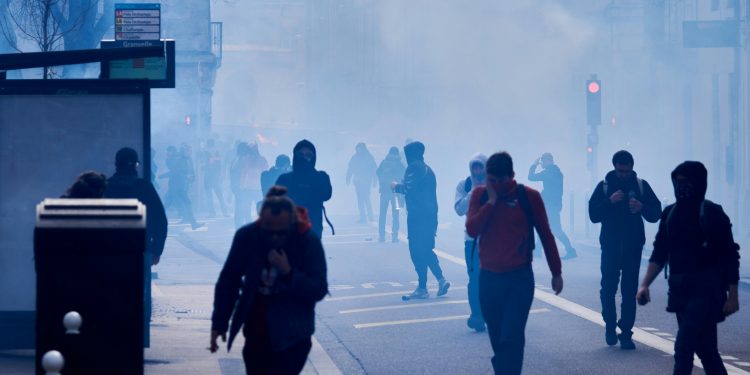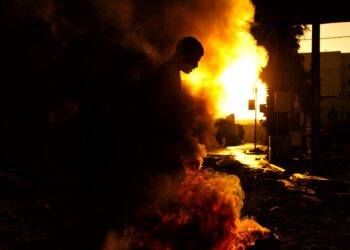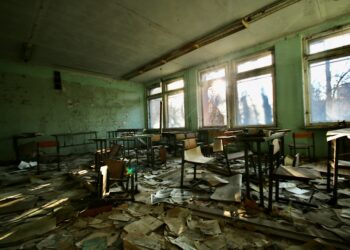Chaos engulfed Bangladesh’s capital as police fired tear gas to disperse thousands of angry students demanding accountability after a Bangladesh Air Force F-7 BGI jet crashed into a Dhaka school, killing 31 people—including 25 children under 12. The Chinese-manufactured fighter jet, suffering mechanical failure, exploded into flames during a routine training mission, trapping students in burning debris just as classes ended Monday. Distraught parents identified victims like 9-year-old Nusrat Jahan Anika, buried hours after her father dropped her off, unaware it would be their final goodbye.
The protesters—some waving sticks—breached the federal secretariat, calling for the education adviser’s resignation and shouting, “We demand answers!” Dhaka police responded with baton charges, tear gas, and sound grenades, injuring dozens. Meanwhile, rescue teams combed the charred school ruins as survivor Raiyan Toufiq recounted his miraculous escape after his shirt caught fire on a staircase. The military confirmed the pilot died attempting to divert the failing jet from populated areas, but students insist ageing F-7 jets must be decommissioned immediately.

Death Toll Rises, As 31 Die, Leaving 10 in Critical Condition
Officials revised the casualty count to 31 dead and 165 hospitalized, with 10 in critical condition. The tragedy prompted a national day of mourning, with flags at half-mast and Pope Francis offering prayers for grieving families. An interim government statement pledged to release victim names and restrict air force training over cities—but protesters dismissed these as empty gestures.
Why It Matters
The F-7 BGI—a Chinese-upgraded Soviet MiG-21—has long raised safety concerns. Bangladesh purchased 16 in 2011, but critics argue the accident-prone jets endanger civilians. The crash mirrors India’s recent Air India disaster, amplifying scrutiny of South Asia’s aviation safety.

















